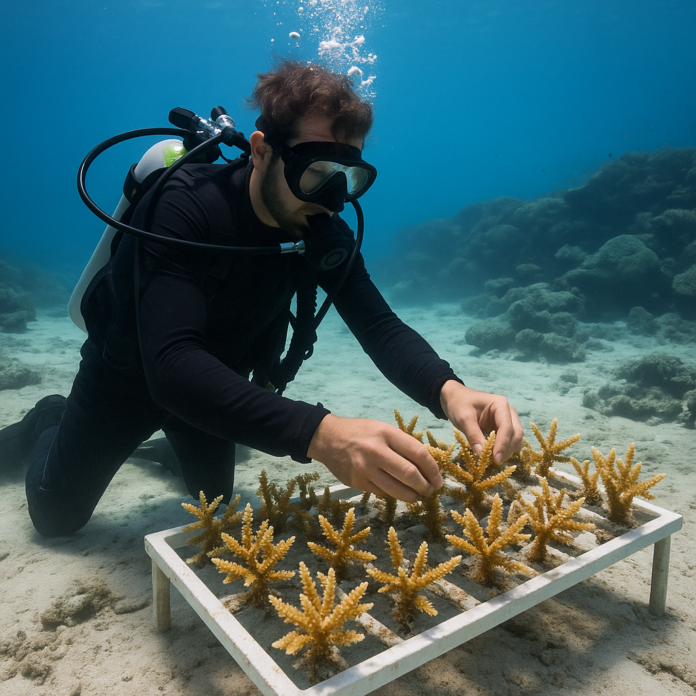Innovative Approaches to Coral Restoration
Good news is emerging from the Great Barrier Reef, where scientists are intensifying efforts to restore coral ecosystems that have suffered from climate change and coral bleaching. The Great Barrier Reef Marine Park Authority (GBRMPA) is leading initiatives that bring together researchers, universities, and conservation organizations to develop more effective coral restoration techniques.
Among the forefront of this research is the University of Queensland, which has been instrumental in cultivating coral larvae in their laboratories. This pioneering work not only increases coral resilience but also provides hope for the restoration of vast areas damaged by environmental stressors. By nurturing coral in a controlled setting, scientists can better understand what makes corals thrive and how to enhance their adaptability to changing ocean conditions.
Collaborative Efforts Driving Success
The Reef Restoration and Adaptation Program (RRAP)—a collaboration led by the Great Barrier Reef Marine Park Authority (GBRMPA) alongside CSIRO, the Australian Institute of Marine Science (AIMS), the University of Queensland (UQ), and other research and conservation organizations—has ramped up efforts to rehabilitate coral ecosystems devastated by climate-driven bleaching.
This inclusive approach not only acknowledges the scientific community’s role but also emphasizes the importance of engaging local communities and indigenous groups. Their traditional knowledge and connection to the sea are invaluable, fostering a sense of stewardship that can lead to sustainable reef management. Inspirational stories of community-led projects serve as a testament to the positive impact of collaboration in safeguarding this natural wonder.
Lab-Cultivated Larvae
At UQ’s coral-larvae facilities, scientists spawn and rear millions of coral larvae under controlled conditions. By studying larval dispersal and survival, they’re refining “seeding” methods that can repopulate damaged reef areas and improve genetic connectivity across vast distances.
Scaling Up In-Water Restoration
AIMS, working with the Queensland Government’s Reef Innovation Fund, conducts large-scale demonstrations in its National Sea Simulator. Here, coral fragments are grown in nurseries (“coral gardening”) before being replanted or directly reattached to degraded reef structures, accelerating natural recovery.
Looking Ahead: A Brighter Future for Coral Reefs
The overall objective of these restored coral ecosystems is to create resilient environments that can withstand the climate challenges of the future. It’s uplifting to see that through innovative science, collaborative efforts, and local engagement, there is a renewed sense of hope for one of the planet’s most treasured biodiversity hotspots. Every fragment of coral that is nurtured and replanted contributes to a larger effort to revive and protect the Great Barrier Reef.
As work progresses, the successes witnessed in the Great Barrier Reef could pave the way for similar restoration projects around the globe. This endeavor represents not just a scientific challenge but a global call to action, urging individuals, businesses, and governments to prioritize environmental conservation. Together, we can build a future that honors and preserves our oceans for generations to come, showcasing that with determination and cooperation, positive change is indeed possible.


